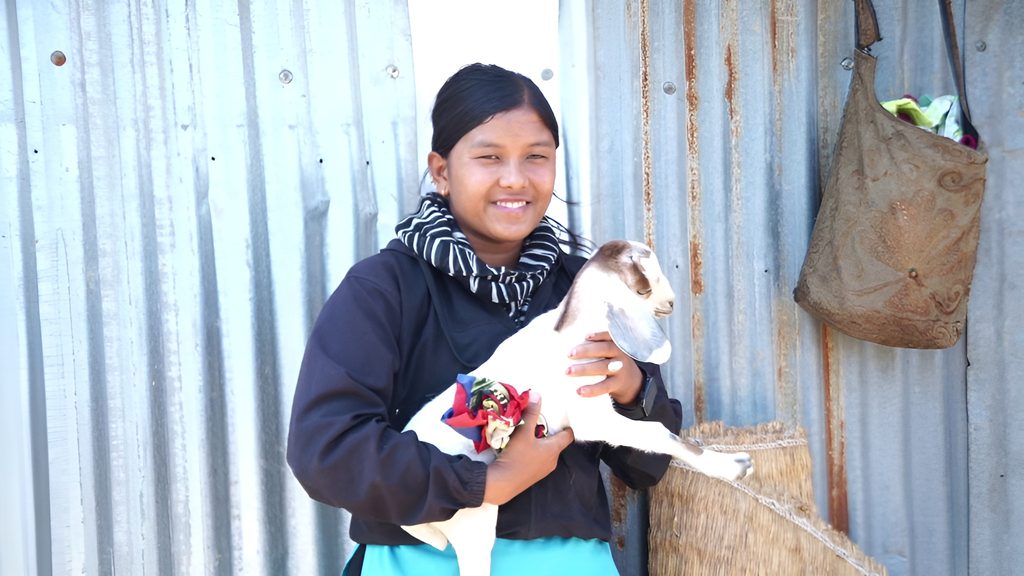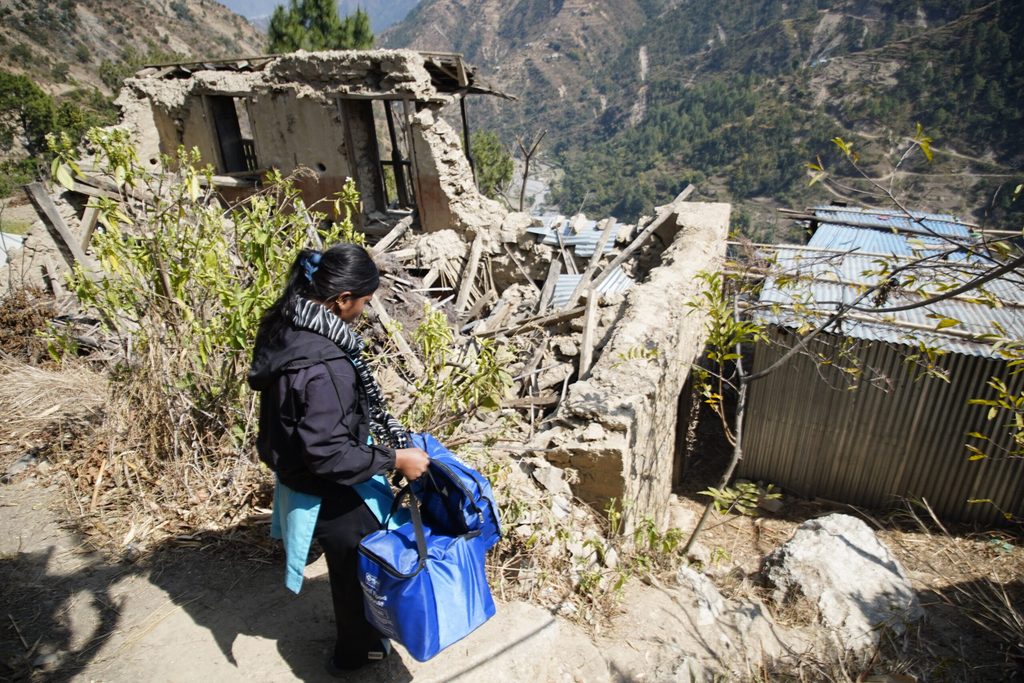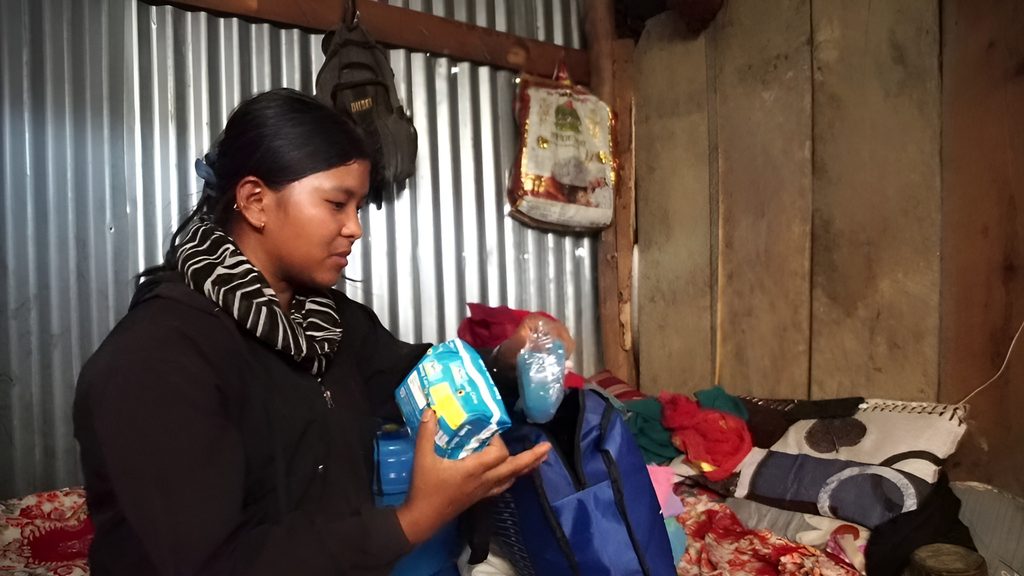Surviving the flood: Susma’s story
Susma, a 22-year-old student from rural Nepal, is a survivor of last year’s devastating floods. Her courage and hope, even as rising waters swept away her home, remind us of the quiet strength within our communities.

Susma, a 22-year-old student from rural Nepal, never imagined that one night could change her life forever. The night the flood came, she and her mother were woken up by terrified screams. Within moments, their small house was surrounded by rising water. “The current was so strong that it started pulling everything away, our clothes, our food, even the walls of our house,” Susma recalls. Her mother grabbed her hand and waded through the waist-deep water, searching desperately for higher ground.
As they reached a nearby shelter, they turned back to see their home disappear beneath the murky floodwaters. Everything they had built over the years was gone in a single night. “I thought we were going to die,” she says. “If my mother hadn’t held onto me so tightly, I don’t think I would have made it.”
“I thought we were going to die. If my mother hadn’t held onto me so tightly, I don’t think I would have made it.”
Susma, Sindhuli
Struggles during the aftermath
After the flood, Susma and her mother took refuge in a crowded temporary shelter. Life in the shelter was difficult, with no privacy, little food, and unsanitary conditions. But for Susma, one of the hardest challenges was managing her period. “I had nothing, no pads, no clean water, not even a private place to change,” she explains. “I had to use an old piece of cloth that was already dirty, and I felt so uncomfortable the whole time.”
With no proper sanitation, she feared infections and avoided eating just to minimise her trips to the shared toilets. “I felt ashamed asking for help, even though I was suffering,” she admits. “No girl should have to go through this because of a natural disaster.”
“I had to use an old piece of cloth that was already dirty, and I felt so uncomfortable the whole time.”
Susma, Sindhuli
Relief that brought hope
After weeks of struggling, relief finally arrived and reached Susma’s shelter with emergency aid, distributing essential supplies like food, and essential supplies.
Susma expressed, “After the flood, everything felt uncertain. In the first few weeks, we struggled to find food and basic supplies, but now we have emergency food supplies and essential materials that helped us survive.”
She added, “Now, even after 6 months, when we are still recovering from the trauma and trying to rebuild, their support continues. This time, they provided us with hygiene kits, kitchen kits, and winterisation kits, exactly what we needed to stay clean, cook meals, and keep warm. I was especially happy to see the mosquito net in the package. We are still sleeping in our damaged house with a broken roof, and mosquitoes have been a big problem. This support gives us not just comfort but also hope that we are not forgotten.”
When Susma opened her relief package, she found sanitary pads, clean clothes, soap, and other hygiene essentials.
“For the first time in weeks, I felt clean and comfortable again,” she says with a relieved smile. “It may seem like a small thing, but for me, it meant everything.” With the essentials provided, she could focus on helping her family and planning for the coming days.


An organised and inclusive distribution process
Susma commented on the distribution process, “It was not chaotic like I feared. They called our names, checked our needs, and gave us relief packages in an orderly way. It felt fair and respectful.”
She also appreciated the information provided on how to give feedback. “They explained how we could share our suggestions about the quality of the materials and the distribution process. There were posters with phone numbers and contact points for feedback,” she recalls. “This was the first time I saw such a system in place, and it made me feel that our opinions mattered.”
“It was not chaotic like I feared. They called our names, checked our needs, and gave us relief packages in an orderly way. It felt fair and respectful.”
Susma, Sindhuli
A call for change
Despite the relief she received, Susma believes more needs to be done to protect young women like her during disasters. “The government needs to think about young women when planning for humanitarian response,” she says. “We need safe shelters, access to hygiene products, and privacy. No girl should have to suffer like I did.”
Her story is a reminder that natural disasters don’t just destroy homes; they take away dignity, security, and hope. But with the right support, young women like Susma can overcome these hardships and rebuild their futures.
About the humanitarian response
In close collaboration with local governments and implementing partner organisations, Janaki Women Awareness Society and Janjati Society Development Programme, Plan International Nepal delivered a swift and inclusive humanitarian response across Saptari, Sarlahi, and Sindhuli affected during the late September 2024 flood. Relief packages, including hygiene kits, winterisation kits, and kitchen supplies, were distributed to 1,957 households, reaching 12,239 individuals.
The response prioritised vulnerable and marginalised groups, supporting 1,407 children under five, 2,175 adolescents, 797 senior citizens, and 465 Dalit households. With 6,291 males and 5,948 females, the effort was both inclusive and impactful.


